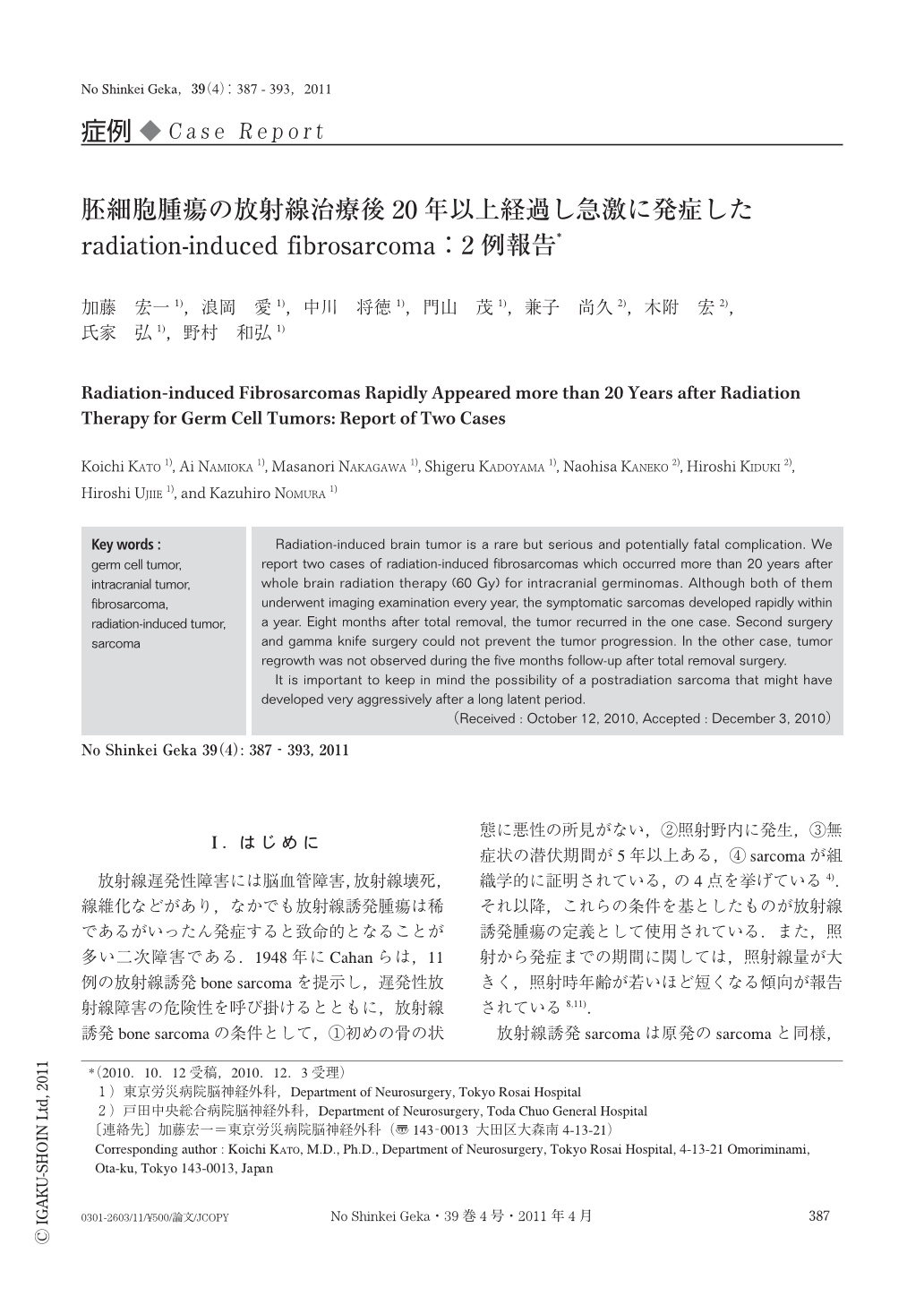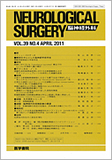Japanese
English
- 有料閲覧
- Abstract 文献概要
- 1ページ目 Look Inside
- 参考文献 Reference
Ⅰ.はじめに
放射線遅発性障害には脳血管障害,放射線壊死,線維化などがあり,なかでも放射線誘発腫瘍は稀であるがいったん発症すると致命的となることが多い二次障害である.1948年にCahanらは,11例の放射線誘発bone sarcomaを提示し,遅発性放射線障害の危険性を呼び掛けるとともに,放射線誘発bone sarcomaの条件として,①初めの骨の状態に悪性の所見がない,②照射野内に発生,③無症状の潜伏期間が5年以上ある,④sarcomaが組織学的に証明されている,の4点を挙げている4).それ以降,これらの条件を基としたものが放射線誘発腫瘍の定義として使用されている.また,照射から発症までの期間に関しては,照射線量が大きく,照射時年齢が若いほど短くなる傾向が報告されている8,11).
放射線誘発sarcomaは原発のsarcomaと同様,またはそれ以上に悪性の性格をもち18),未だ有効な治療法が確立されていない.今回われわれは,胚細胞腫瘍に対し放射線治療を行い,20年以上,毎年画像検査を行っていたにもかかわらず,その定期検査の間に急激に発症した症候性の放射線誘発fibrosarcomaを経験したため,文献的考察を含め報告する.
Radiation-induced brain tumor is a rare but serious and potentially fatal complication. We report two cases of radiation-induced fibrosarcomas which occurred more than 20 years after whole brain radiation therapy (60 Gy) for intracranial germinomas. Although both of them underwent imaging examination every year,the symptomatic sarcomas developed rapidly within a year. Eight months after total removal,the tumor recurred in the one case. Second surgery and gamma knife surgery could not prevent the tumor progression. In the other case,tumor regrowth was not observed during the five months follow-up after total removal surgery.
It is important to keep in mind the possibility of a postradiation sarcoma that might have developed very aggressively after a long latent period.

Copyright © 2011, Igaku-Shoin Ltd. All rights reserved.


